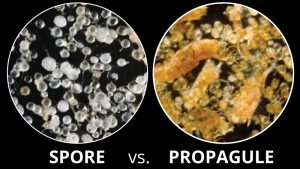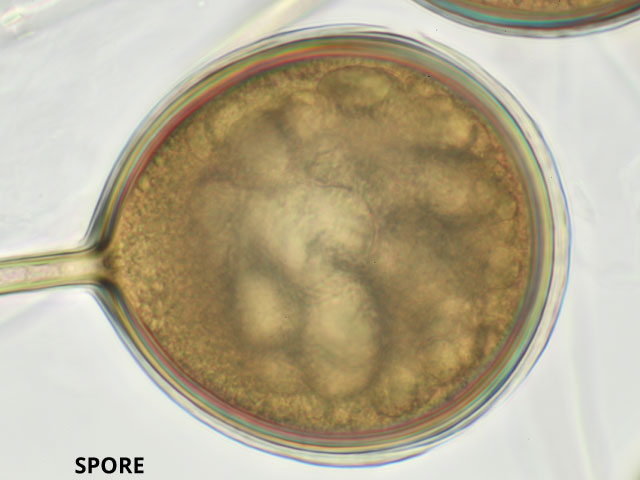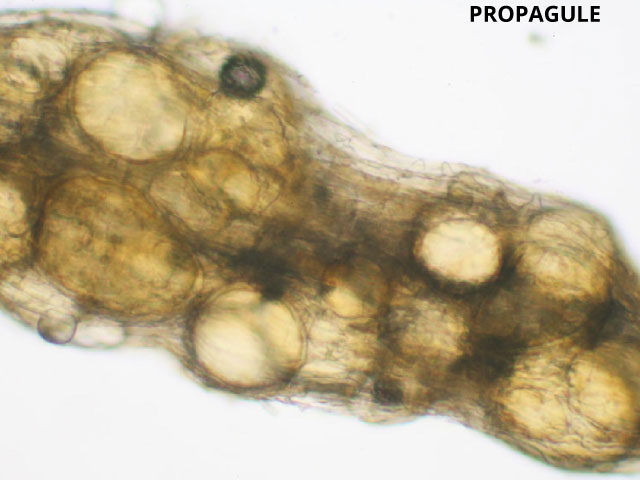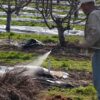
As you may have noticed, some producers and manufacturers of mycorrhizal inoculant products are currently giving mixed messages on how they represent the mycorrhizae content of their finished goods. This seems to be causing some confusion, and this confusion is not good for the horticultural industry. Mycorrhizal technology is already complex to understand, and the confusion between “spore” and “propagule” in mycorrhizal inoculant labeling is making it difficult for some consumers to understand the differences between products and truly compare apples to apples when assessing mycorrhizal products. With these mixed messages, buyers are forced to sort through the confusion, and in some cases, this causes growers, landscapers, and turf managers to give up on the idea of utilizing mycorrhizae altogether.
The purpose of this article is to attempt to clarify this issue and allow the industry to fairly judge the mycorrhizal inoculant products available to the industry based on their merits in a true side-by-side comparison, based on industry-approved labeling guidelines and definitions.
Clarity in Labeling
Probably the best place to start sorting this out is by discussing what is listed on the label. If a mycorrhizal manufacturer wants to be able to sell their product in the United States and Canada, they need to get the label approved and inspected by 53 regulatory agencies. These agencies represent all fifty states, the District of Columbia, Puerto Rico, and the country of Canada. Since its start in 1946 the Association of American Plant Food Control Officials (AAPFCO) has been the industry organization that fostered cooperation between all of these North American regulators. AAPFCO works to develop labeling guidelines so manufacturers know what to include on their labels. Originally started as a fertilizer-focused group, AAPFCO now includes soil manufacturers and non-EPA or Environment Canada biological products.
With the increased interest in biological products, an AAPFCO working group was formed in 2018 to create definitions for a variety of commonly referenced terms used for both bacteria and mycorrhizae. In 2020, AAPFCO approved the definitions. Here are three of the AAPFCO-approved definitions that help to clarify mycorrhizal product labeling, and impact the content of this article.
Mycorrhizal fungi – are fungi that are capable of forming mutually beneficial symbiotic associations between the fungal mycelium and the roots of vascular plants. These fungi include endomycorrhizal fungi and ectomycorrhizal fungi.
Endomycorrhizal fungal propagule – are the structures of endomycorrhizal fungi that are capable of forming a symbiotic association with plant roots. These structures are endomycorrhizal spores and root fragments colonized by endomycorrhizal fungi.
Ectomycorrhizal fungi propagule – is a structure of ectomycorrhizal fungi that is capable of forming a symbiotic association with plant roots. These structures are spores of ectomycorrhizal fungi.
So, what do these definitions mean? The symbiotic relationship between mycorrhizae and plants is defined in the first definition. The third definition clarifies spores as the only form of propagules for ectomycorrhizae and plants.
The quest for clarity in this article begins with the second definition. Endomycorrhizal propagules are structures capable of forming symbiotic relationships with plant roots. These structures are defined as both spores and colonized root fragments.
Mycorrhizal Applications follows the AAPFCO definition for both endomycorrhizal and ectomycorrhizal propagules.
Why Choose Propagule Products vs. Spore-Only Products?
There are three mycorrhizal structures capable of forming symbiotic relationships with plants. Hyphae are the first capable of forming that symbiotic relationship. A good example of this is in the landscape, where you treat one landscape plant through the application of MycoApply mycorrhizae, and as the initial plant’s hyphal network expands, it comes in proximity with the roots of a neighboring plant. The neighbor plant can then initiate the relationship with the mycorrhizae and the symbiotic relationship will begin again. Hyphae play an important part in the spread of mycorrhizae in a multi-plant container, with turf, and in the landscape. However, since they are short-lived when they become hyphal fragments, they are not included, listed, or labeled as propagules by Mycorrhizal Applications and AAPFCO. This short shelf life would prevent their use in commercial products with a 2-year shelf life.
Colonized root fragments and spores are the next two types of mycorrhizal structures capable of forming symbiotic relationships with plants. Colonized root fragments and spores both play an important role in the inoculation of plants by mycorrhizae. Plants, and the mycorrhizae which they form symbiotic relationships with, dictate the balance between the production of colonized roots and actual spores. Different plant types, different mycorrhizal species, and different environmental conditions influence the breakdown between these two important types of propagules in commercial production. Root fragments represent an important part of the mycorrhizal propagules present in inoculant products because of the way the inoculum (or “active ingredient”) is produced at a commercial scale, i.e., on the roots of a host plant. These tiny root pieces contain various fungal structures including hyphae, spores, and vesicles that can be an effective means of fungal propagation and help re-establish the symbiosis with plant roots. Often, one root fragment propagule can contain many spores within it, so even though it is counted and labeled as one propagule, it can contain many spores.


Endomycorrhizal spores can be thought of as the most dormant stage of mycorrhizal propagules. Colonized root fragments can be thought of as a long-term ready-for-immediate-action version of endomycorrhizal propagules. In horticulture, we are often wanting the symbiosis period to happen ASAP. This could be during plug or liner production, or if the mycorrhizae are introduced during the growing stage of production. But as growers, of course, we want results as early as possible in the production process.
The response rate of endomycorrhizae is also influenced by the genus and species offered in any particular mycorrhizal product. Some endomycorrhizal genera and species are quicker to respond to the plant’s root hormones or “exudates” and initiate the symbiosis than others. The response rate is also influenced by the amount of colonized root fragments ready for immediate action once exudates are released by the inoculated plant’s roots. Conditions in the rhizosphere (root-zone ecosystem) including phosphorus concentration, soil pH, soil temperature, and soil air capacity also influence all propagule germination rates and speeds.
So, if you opt for an endomycorrhizal product with fewer, or only one mycorrhizal species and only spores, you have the potential to have the slowest response rate by the mycorrhizal inoculant because the symbiosis is dependent on fewer species of mycorrhizal fungi, combined with the slower response of the spores as propagules. If you opt for a product like the MycoApply endomycorrhizal inoculants, which have multiple endomycorrhizal species and contain both colonized root fragments and spores, you will have the fastest mycorrhizal symbiosis response rate based on the diversity of mycorrhizal species and propagule types offered.
The formation of the symbiosis between a plant and mycorrhizae can take up to two weeks after the application of the product. Often, the plant can start to benefit from the relationship sooner, but we generally estimate two weeks to be safe. Growers will then start to see the difference approximately two weeks after the symbiosis is completed.
Greenhouse production of plants is often at a rapid pace. Whether it is the number of weeks during propagation or the entire crop cycle, time is of the essence. If that is the case in your greenhouse, nursery, landscape, or turf planting, I suggest you opt for a product that contains multiple species and propagules that contain both colonized root fragments and spores, in order to have the most fast-acting mycorrhizal inoculant formulation, and most rapid and thorough root colonization.
If you have any questions about anything covered in this article, please contact your local Mycorrhizal Applications Representative or call 866-476-7800 or email us at inquiries@mycorrhizae.com.
Article by: Blair Busenbark
Mycorrhizal Applications – Sales and Commercial Marketing Manager
May 6, 2021







